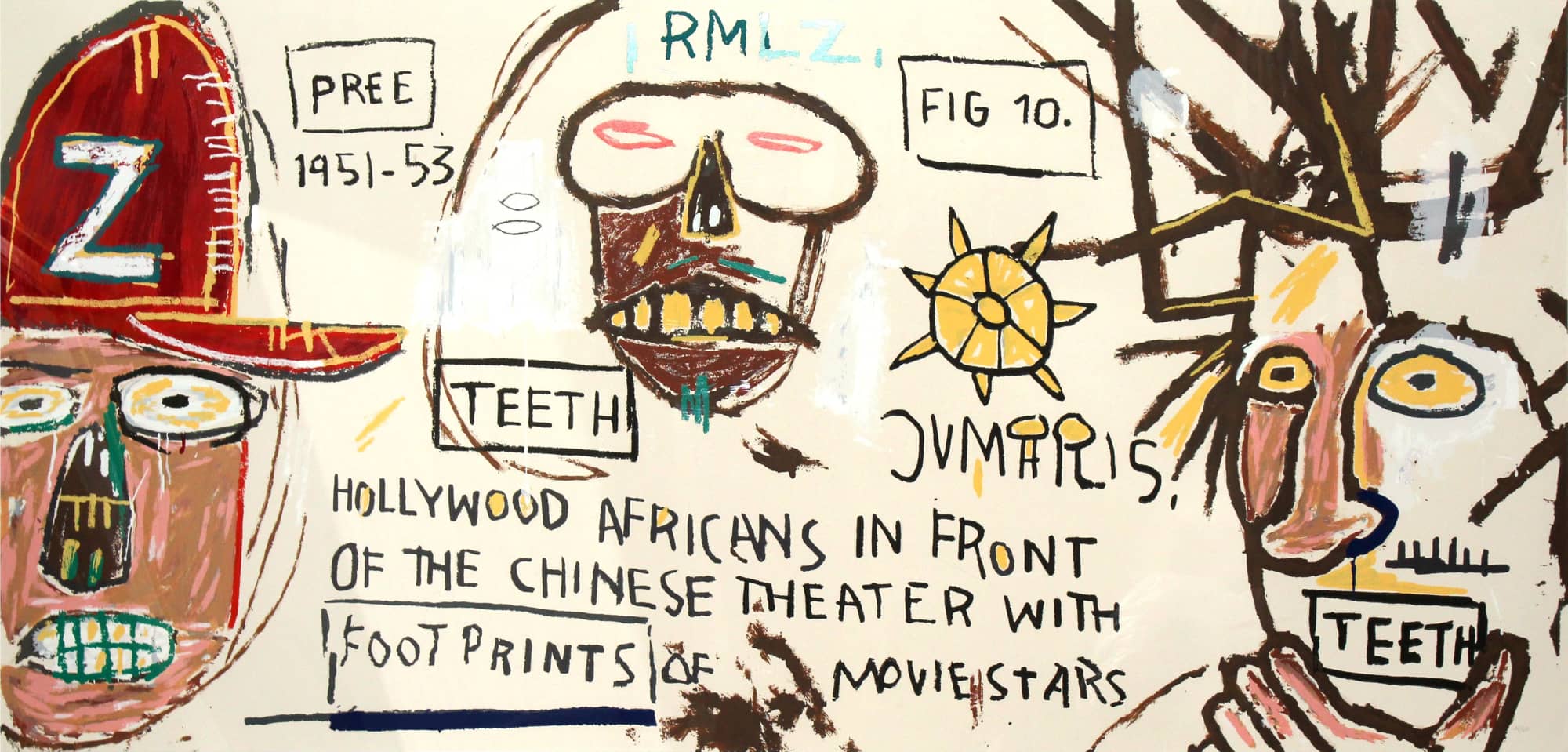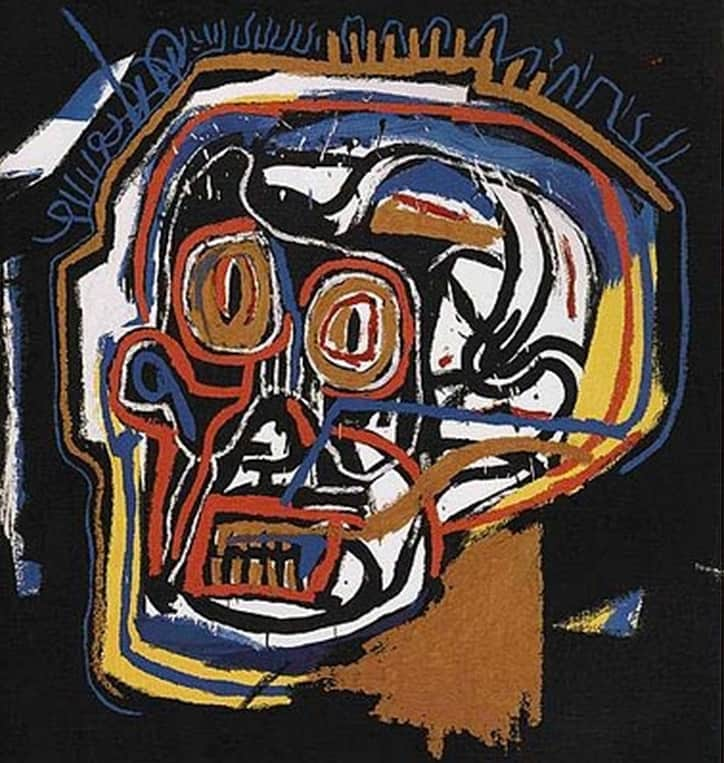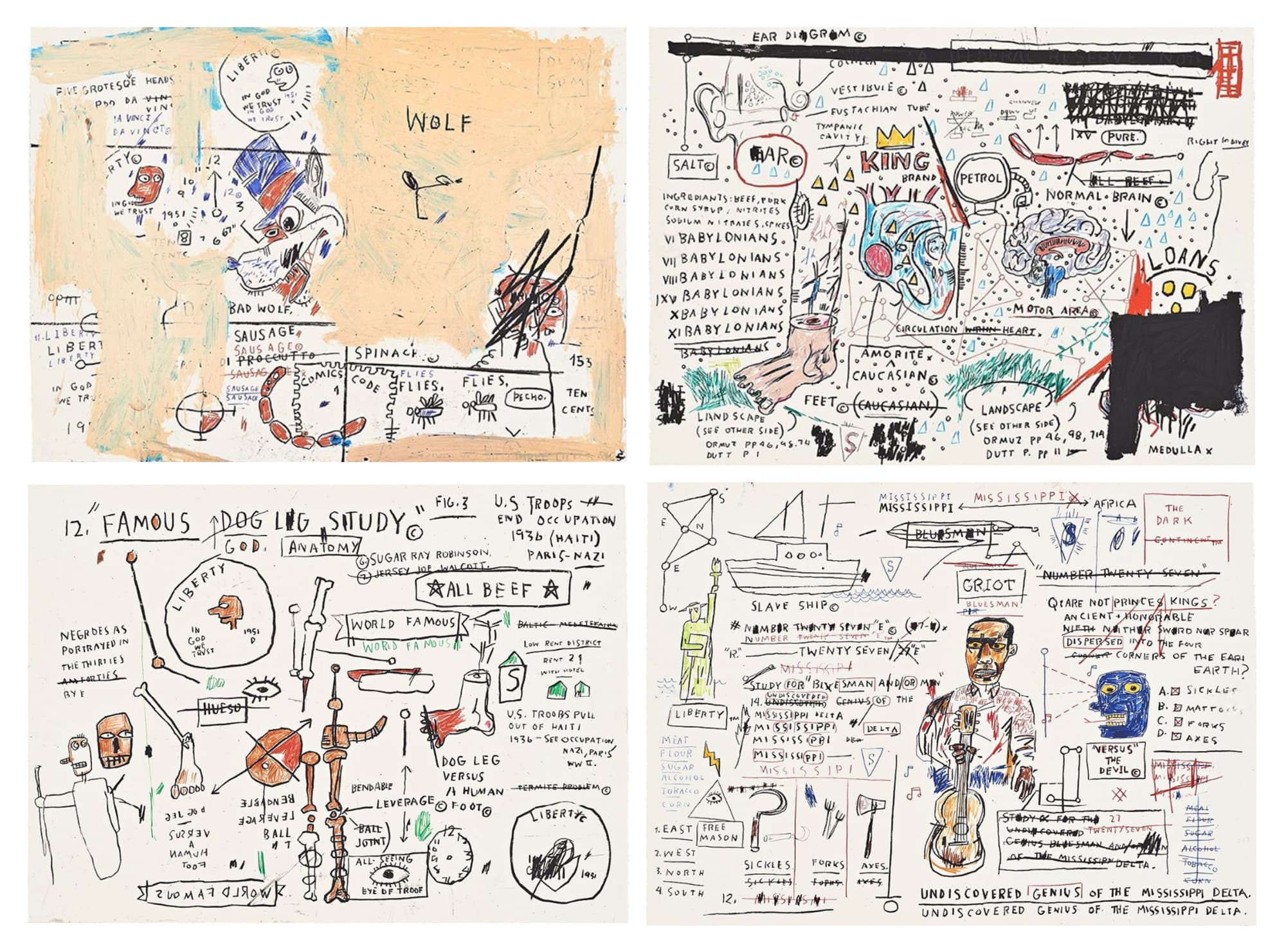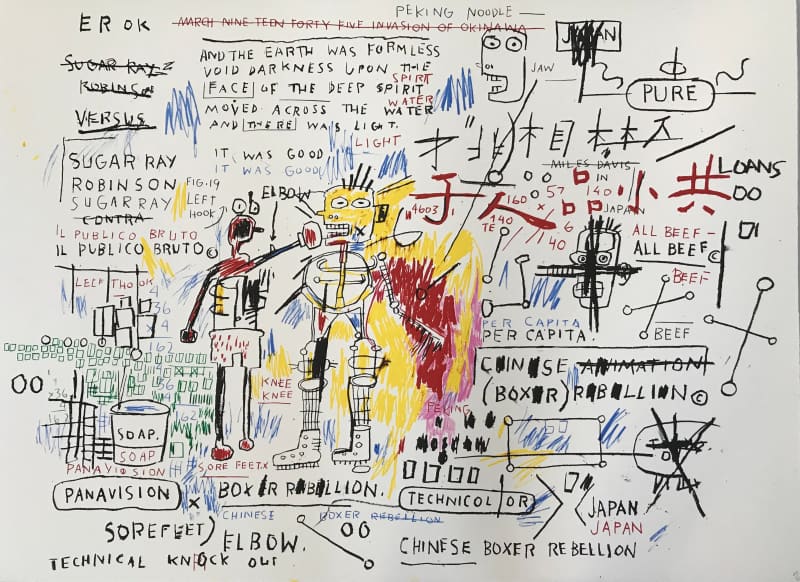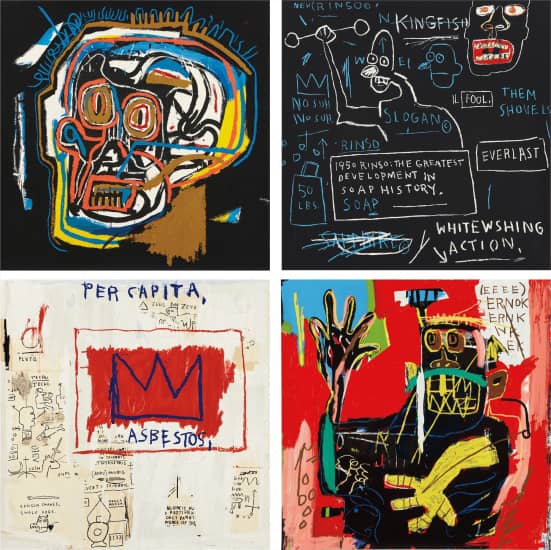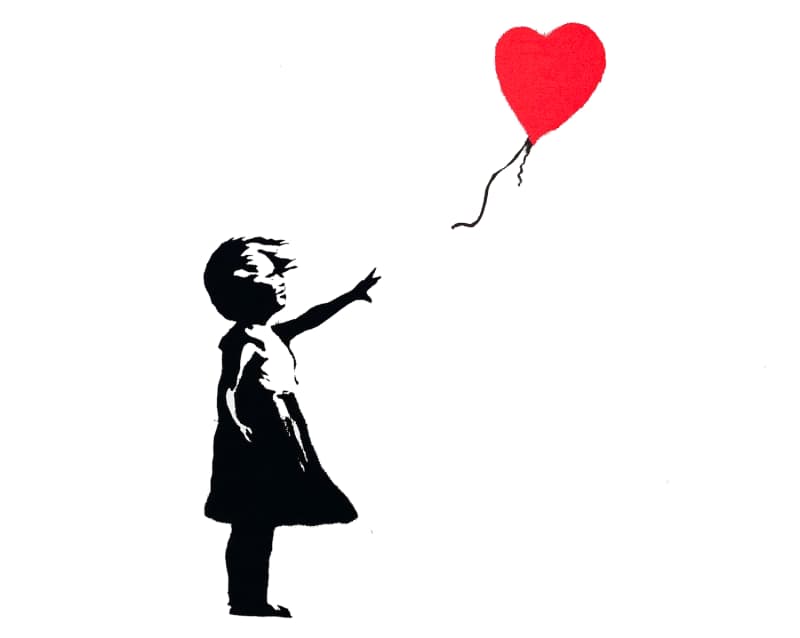Following yesterday’s record-breaking Basquiat sale at Christie’s Hong Kong, we investigate why the Asian art market can’t seem to get enough of the New York artist.
On the 23rd March, Warrior by Jean-Michel Basquiat became the most expensive Western artwork ever sold in Asia. Estimated to achieve over $31 million yesterday at auction, the painting went under the hammer for over $41 million, inclusive of fees. Sold in a single lot, as part of Christie’s 20th century sale season, the price of Basquiat’s landmark work indicates a new milestone for Jean-Michel Basquiat’s art. In the wake of this record transaction, we investigate why the late graffiti artist is dominating the Asian art market in 2021.
There is a history of collecting Basquiat in Asia.
The Asian art market’s love of Basquiat is not a recent phenomenon. In fact, over the past decade, many of Basquiat’s most celebrated and expensive works have been bought by collectors from Asia. In 2017, Yusaku Maezawa, a Japanese e-commerce billionaire and art collector, broke the record for the highest purchase price for a Basquiat, paying $110.5 million for Untitled (1982) at a Sotheby’s evening sale. It was only one year previously, that the very same collector had originally broken Basquiat’s auction record, purchasing a different Untitled (1982) for $57.3 million. Maezawa’s purchases catapulted Basquiat into art world immortality, with the 2017 sale cementing Basquiat as the most expensive American artist ever sold on the secondary market.
Collectors like Maezawa have been crucial in driving the global Basquiat market to new heights, with their record sale results increasing Basquiat’s popularity amongst collectors. Therefore, when we consider Basquiat’s ongoing success, we must partially attribute the vitality of his market to the historic appetite of Asian collectors.
The appeal of Basquiat’s artwork is universal. Rendered with a childlike hand and an expressive use of colour, Basquiat’s art seems to tap into a primal human instinct that appeals to all. Due to the universal nature of his work, it is of no surprise that his art has admirers from all over the world. However, unlike the rest of the globe, Basquiat’s appeal to the Asian market is rather unique and can be founded in his connection to Japan.
With a dynamic and vibrant art scene of their own, Japan was the first country outside of the United States to take notice of the emerging artist. Throughout his short lifetime, Basquiat often visited Japan, having held six solo exhibitions and ten group exhibitions in the country. Although Basquiat’s work primarily revolves around subjects of African-American heritage, identity and language, many of Basquiat’s works are also influenced by his travels to Tokyo. Works including One Million Yen (1982), Boxer Rebellion (1983) and Onion Gum (1983), incorporate Japanese words, pictograms, phrases and characters. Whether the artist’s assimilation of Japanese culture is indicative of his love for drawing his surroundings, or whether his mentions of Japan are an acknowledgement of America’s colonising attitude to race, it is obvious that Basquiat was influenced by his time in Japan.
The Asian art market is strong.
Basquiat’s connection with Japan, however, does not fully account for the artist’s more recent success in the Asian market. This is undoubtedly connected to the general strength of the art market in Asia, following the pandemic. While Western trade is still recovering, comparatively, the Eastern art market is gaining strength, with Greater China accounting for 20% of all global art sales in 2020, despite the fact it was first country to go into lockdown that year.
By the end of 2020, Christie’s Hong Kong achieved the highest sale total for an auction house in Asia, achieving 17 records for contemporary artists, including Dana Schutz and Amoako Boafo, in its Hong Kong-to-New York December 2nd sale. This auction followed an unprecedented year for the Hong Kong market, where works by Gerhard Richter and George Condo were sold at record breaking prices in July 2020 at Sotheby’s Hong Kong.
The Art Basel x UBS 2021 report also acknowledged that Asian collectors accounted for 30% of all of Sotheby’s sales in 2020, with 40% of those collectors being new to the auction house. This illustrates a strong increase in first time collectors throughout Asia – a fact which has certainly helped to fortify the art market against the hold of the pandemic.
With the Asian art market remaining relatively unscathed by the economic grips of the pandemic and their appetite for Western art steadily increasing, 2021 has provided the perfect setting for Basquiat’s success at auction.His artworks are not only internationally renowned and connected to the region, but they also have provided exceptional returns, making a Basquiat an ideal choice for collectors in Asia, and beyond.

